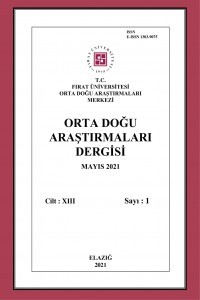Bir Kimlik Tespiti, Kolektif Şuur ve Sosyal Bir Travma Olarak Hocalı Faciası
Karabağ çatışmalarında insanların yaşadığı çok sayıdaki facia ve acımasız şiddet dolu sahneler arasında 1992 yılı Şubat ayının 25’inden 26’sına geçen gece yaşanmış olaylar kendine has amansızlığıyla ayrılır. Bu gecede Ermeni militanları, BDT’ye bağlı Birleşik Silahlı Kuvvetlerinin 366. Alayına mensub askerlerin desteğiyle, sadece birkaç saat içinde Azerbaycan’ın Hocalı şehrini yeryüzünden silerek yüzlerce sivil insanı işkenceyle öldürüldü.1 Hocalı faciasının, şüphesizdir ki hukuki, siyasi, iktisadi, sosyal vb. çeşitli yönleri bulunmaktadır. Burada facianın bazı psikolojik yönleri ele alınacaktır.
The Khojaly Tragedy as A Collective Trauma and Factor of Collective Memory and Identity
The article considers some socio-psychological and socio-cultural aspects of the Khojaly tragedy. In particular the author analyses that event within the framework of such notions as a collective trauma and collective memory, and discuses the various ways in which Azerbaijani society could relate to the trauma. It is argued that this event was not only a psychic trauma for those who were the participants or victims of massacre but a collective trauma for the entire population, because people felt a threat to their collective identity. Looking into different ways of dealing with collective trauma the author suggests such method as “working through it” which requires broad and all-sided discussion of the traumatic event, in order to make sense of their causes, factors, and consequences and the definition of moral and legal responsibility for what took place. The author especially points out the role of international organizations in bringing justice and punishment of criminals irrespective of any geopolitical and economic calculations
___
- • Human Rights Watch World Report, 1993; Goltz Th. Nagorno-Karabagh Victims Buried in Azerbaijani Town, The Washington Post, 28 fevralya 1992
- • Foa E.B., Kin T.M., Fridman M.Dj. Effektivnaya terapiya posttravmatiçeskoqo stressovoqo rasstroystva. М.: Kogito-Çentr, 2005.Фоа
- • Alexander J.C, “FToward a Theory of Cultural tTrauma”. Cultural Trauma and Collective Identity (Ed. J.C.Alexander, R.Eyerman, B.Giesen, N.J.Smelser, and P.Sztompka),. CA: University of California Pres 2004
- • Vertzberger Y.Y. (1997). “The Antinomies of Collective Political Trauma: A Pre-Theory”. Political Psychology
- • Т. De Vааl. (2005). Çеrnıy sad. Armeniya i Azerbaydjan: mejdu mirom i voynoy. М.
- • Neal A.G. (1998). National Trauma and Collective Memory: Major Events in the American Century. New-York: M.E. Shape Amonk
- • Kornell S. Konflikt v Naqornom Karabahe: dinamika i perspektivı reşeniya. http://www.sakharovcenter.ru/publications/ azrus/az_015.htm
- URL:http://web.archive.org/web/20080130121758/
- • Aarelaid-Tart A. (2009). “Cultural Trauma as the Mnemonic Device of Collective Memory”. The Burden of Remembering. Helsinki: Finnish Literature Society, (Ed. E.Koresaar, E.Lauk & K.Kuutma)
- • Halbwachs M. (1992). On Collective Memory, Chicago, University of Chicago Press
- • Lowenthal D. (2001). “Preface”, in Forty, Adrian & Susanne Kuchler, eds. The Art of Forgetting, Berg Publishers
- B.Schwarz söylediklerine göre: “Tarihi hadisenin (olguların) ilk revize çalışmalarına dair düzeltmeler sonraki nesillerin bu açıklamalara yapacağı ilavelerin diyapozonunu sınırlandırır.”. Bkz. Schwartz B., “Social Change and Collective Memory: The Democratization of George Washington”, American Sociological Review. 56 (2), 1991, pp. 221-236
- • Karaqezov R. (2005). Metamorfozi kollektivnoy pamyati v Rossii na Çentralnom Kavkaze. Baku: Nurlan.
- • Ferro M. (2003). The Use and Abuse of History: or How the Past is Taught to Children, Routledge
- • Bu tür iftiralar için bknz: Melik-Şaxnazaryan L., Demoyan Q. Hodjalinskoye http://armenianhouse.org/mshakhnazaryan/docs- ru/khojaly_f/contents.html delo: Osobaya papka. URL
- • Smith A. (1995). Nations and Nationalism in a Global Era, Cambridge: Polity Press
- • Erikson K.T. (1994). A new species of trouble: Explorations in disaster, trauma, and community. New York: Norton
- • Lupu L.(2012) Perceptions and psychological wounds in Nagorno- Karabakh conflict. Unpublished manuscript. Center for Conflict Prevention and Early Warning. Bucharest, Romania
- • Schwartz B. (1991). Social Change and Collective Memory: The Democratization of George Washington. In: American Sociological Review
- ISSN: 1303-9075
- Başlangıç: 2007
- Yayıncı: Fırat Üniversitesi
Sayıdaki Diğer Makaleler
Soykırım Suçunun Değerlendirilmesi ve Uluslararası Hukukta “Çifte Standartlar” Sorunu
Bir Kimlik Tespiti, Kolektif Şuur ve Sosyal Bir Travma Olarak Hocalı Faciası
Türkiye’nin Dağlık Karabağ Politikası
Katliamın Yirminci Yılında Türk Basınında “Hocalı” Yaklaşımı
Karabağ Savaşı ve Adım Adım Hocalı Soykırımı
26 Şubat 1992 Hocalı Soykırımı Üzerine
İşgalcilik Faaliyetleri ve Karabağ Olayları
BÜTÜN YÖNLERİYLE HOCALI SOYKIRIMI
